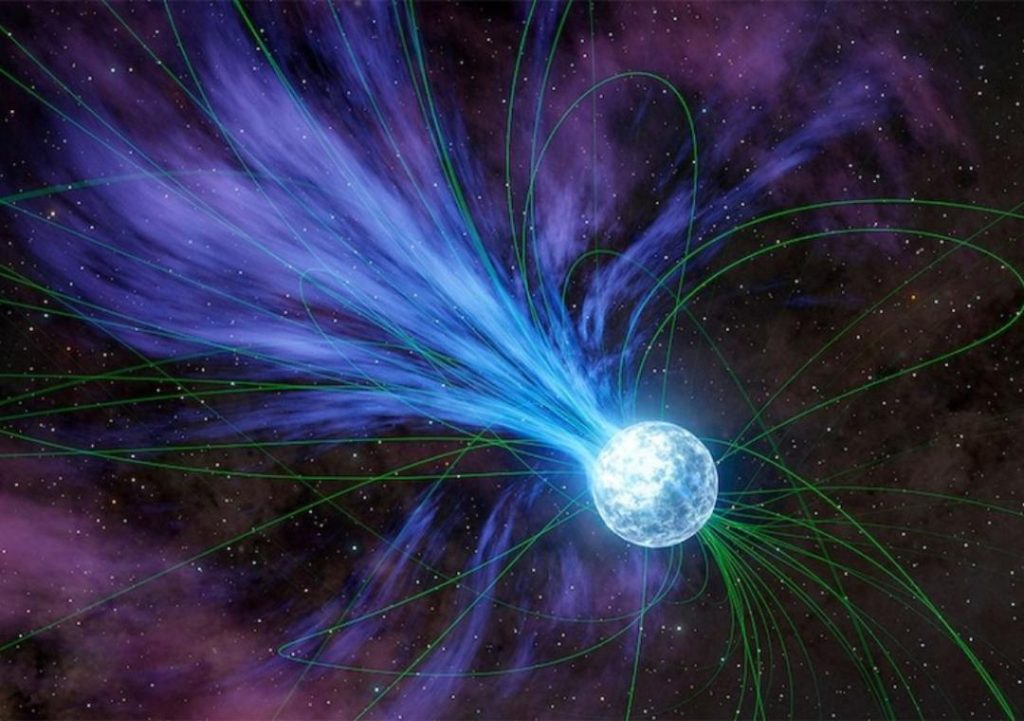
Gold and Platinum Created Through Neutron Stars’ Explosions: Study
For centuries, humans have been fascinated by the precious metals gold and platinum. From ancient civilizations to modern-day jewelry makers, these metals have been coveted for their rarity, beauty, and value. But have you ever wondered where these metals actually come from? Scientists have long debated the origin of gold and platinum, and a recent study has shed new light on their creation.
According to a study led by Columbia University student Anirudh Patel, magnetars, or highly magnetized neutron stars, helped create elements like gold and platinum in a cosmic event over 20 years ago. Neutron stars are incredibly dense objects that form when a star undergoes a supernova explosion. These explosions are so powerful that they can create heavy elements like gold and platinum.
The study, published in the journal Nature Astronomy, found that magnetars exploded and released flares that contained these elements. The explosions happen approximately once per decade in the Milky Way and annually across the observable universe. This discovery has significant implications for our understanding of the origins of precious metals on Earth.
So, how did scientists come to this conclusion? To understand the creation of gold and platinum, researchers turned to NASA’s NuSTAR (Nuclear Spectroscopic Telescope Array) space telescope. Launched in 2012, NuSTAR is designed to detect and study high-energy radiation from celestial objects. In 2017, the telescope captured data on a massive explosion that occurred in the galaxy NGC 6440, located about 20,000 light-years from Earth.
The explosion was caused by a magnetar, a type of neutron star with a magnetic field hundreds of thousands of times stronger than Earth’s. When the magnetar exploded, it released a massive amount of energy in the form of X-rays and gamma rays. By analyzing this data, scientists were able to determine that the explosion was responsible for creating heavy elements like gold and platinum.
But how did these elements get from the magnetar to Earth? The answer lies in the explosion itself. When the magnetar exploded, it flung heavy elements like gold and platinum into space. These elements then mixed with other materials, such as hydrogen and helium, to form a new type of star. Over time, these stars evolved and eventually exploded as supernovae, scattering the elements throughout the galaxy.
The study’s lead author, Anirudh Patel, explained the process in an interview: “These magnetars are incredibly powerful, and when they explode, they release a huge amount of energy. This energy heats up the surrounding material, causing it to emit X-rays and gamma rays. By studying these emissions, we can determine the composition of the material and identify the elements that were created.”
The discovery of gold and platinum in magnetar explosions has significant implications for our understanding of the origins of precious metals on Earth. For centuries, humans have mined these metals from the Earth, but we have never fully understood how they got here. Now, scientists have a new explanation: they were created in the explosions of magnetars and scattered throughout the galaxy.
This study has far-reaching implications for our understanding of the universe and the origins of life on Earth. It highlights the incredible power of magnetars and the importance of continued research into these enigmatic objects. As scientists continue to study the universe, we may uncover even more secrets about the origins of precious metals and the mysteries of the cosmos.
In conclusion, the creation of gold and platinum through neutron stars’ explosions is a fascinating discovery that sheds new light on the origins of precious metals on Earth. By studying magnetars and their explosions, scientists have gained a new understanding of the universe and the incredible processes that shape it. As we continue to explore the cosmos, we may uncover even more secrets about the origins of precious metals and the mysteries of the universe.






